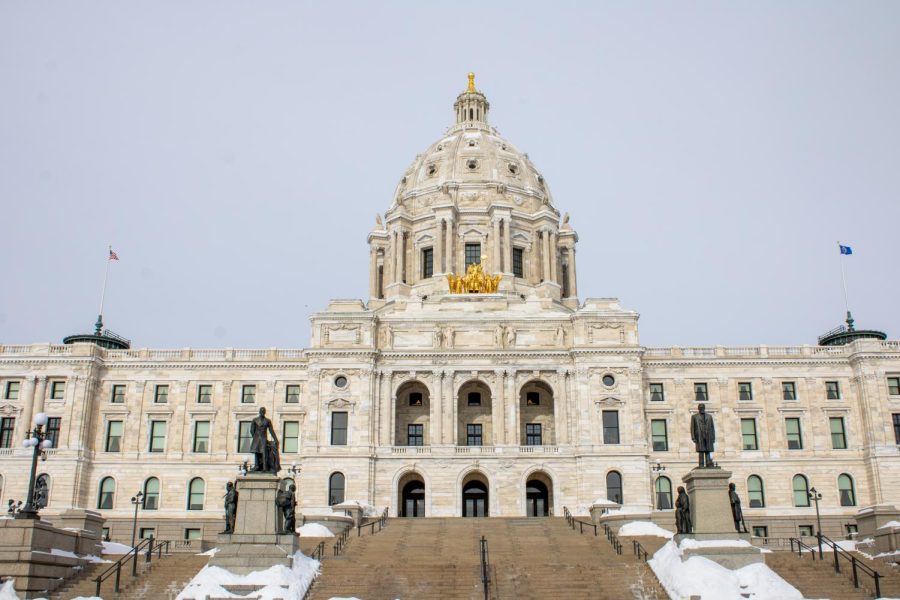The University of Minnesota presented Tuesday an addition to its supplemental budget request for the next biennium to the Minnesota Legislature, which includes an additional $97.5 million on top of the original $205 million ask.
The University presented its original request to the House Higher Education Finance and Policy Committee on Jan. 31. The Board of Regents will vote whether to approve the updated request during the board’s meeting on Friday.
Some legislators remarked in January that the University’s $205 million request was lower than expected, especially considering the Minnesota State System of Colleges requested $350 million.
The original ask included $135 million for inflationary costs, $60 million for a scholarship to recruit Minnesota residents and $10 million for public safety.
University Budget Director Julie Tonneson said in the meeting Tuesday the University revised its request because it has been more than six months since administrators identified the University’s needs related to the original request and “nothing seems to stand still.”
The University is requesting $97.5 million more for the 2024-25 biennium to cover the costs of three new request items – a tuition freeze for the next two years, projected tuition revenue shortfalls and an American Indian Scholars Program.
UMN faces “enormous pressure and interest” to freeze tuition
Originally, the University requested $135 million over the biennium to address inflationary costs associated with compensation, operational support and student services; these costs would also be covered by administrative cost reductions and tuition revenue.
In January, University administrators said if they received the full $135 million, tuition on the Twin Cities campus would still increase about 3.5%. If a tuition freeze is put in place, the University will no longer be able to cover inflationary costs with additional projected tuition revenue, Tonneson said.
The University estimated it would cost $40.5 million over the next two years to implement a tuition freeze, which would hold tuition flat for resident undergraduate students at all five campuses.
“If we didn’t get the [funding] in core mission support and there was a tuition freeze for resident undergraduate students, it would force significant tuition rate increases on our other student populations … and substantial internal spending cuts,” Tonneson said.
Rep. Nathan Coulter (DFL-Bloomington) questioned why the tuition freeze was not included in the University’s original request presented to the committee in January, saying “tuition is too damn high.”
“We didn’t put a tuition freeze on the table because we felt … that was maybe just a step too far, but one of the things we’ve learned in the last month or so is the enormous pressure and interest in pursuing that,” Myron Frans, senior vice president for finance and operations, said.
Systemwide tuition revenue shortfall is projected to be greater than expected
The University is requesting $48 million to account for projected tuition revenue shortfall. Tonneson said the University analyzes actual enrollment every spring, and this year’s enrollment is down more than anticipated on all campuses; the University is projecting a $24 million shortfall in tuition revenue.
“Without an increase to our base appropriation in that amount, it will mean further reliance on internal spending reductions and potentially tuition increases to balance our budget,” Tonneson said. “We have expected and planned for some [enrollment] reductions, but the magnitude of change was simply greater than we anticipated.”
Tonneson said the decrease in enrollment is due to several factors exacerbated by the COVID-19 pandemic, including economic hardships, health issues and changes in high school experiences and expectations.
Fall 2022 enrollment increased on the Twin Cities campus by nearly 5% compared to the previous year but decreased on the other four campuses, according to the University’s Institutional Data and Research. In the spring, enrollment decreased on all campuses except for Crookston, which experienced an increase of about 2% compared to spring 2022.
Overall, most campuses are seeing a decrease in undergraduate, graduate and professional degree-seeking students. Enrollment increases are primarily happening within the non-degree student population.
Non-degree seeking students are enrolled in courses for credit but are not seeking a degree or “recognized postsecondary credential,” according to the Integrated Postsecondary Education Data System. This includes PSEO students and College in the Schools enrollments, according to University Director of Public Relations Jake Ricker.
Over the past year, the University has seen decreases in student retention, graduate and nonresident enrollment, credits taken and transfers along with an increase in enrollments at community colleges. More students are also progressing through programs more rapidly, resulting in fewer fifth-year students.
“Which is a good thing … but it’s happening at a faster rate than anticipated,” Tonneson said.
Tuition program for Indigenous students could increase enrollment
The third addition to the budget request is $9 million to implement the American Indian Scholars Program, which Gov. Tim Walz and Lt. Gov. Peggy Flanagan recommended the Office of Higher Education adopt in its budget.
The program would provide a first-dollar tuition and fees pathway for eligible Indigenous students to complete an undergraduate degree at the University.
Eligible students include Minnesota residents enrolled as members or citizens of any federally-recognized American Indian or Canadian First Nation tribe and non-resident students enrolled in a Minnesota tribal nation. Funding from the state would cover students’ tuition and fees as well as support services for these students.
“We see this as a real need in recruiting eligible students to the state and to our campuses and in serving them successfully through to graduation,” Tonneson said, adding that the Morris campus in particular would benefit from this program.














